Another fabulous Isle of Coll walk, providing a plethora of interesting sightings and stimulating conversations.
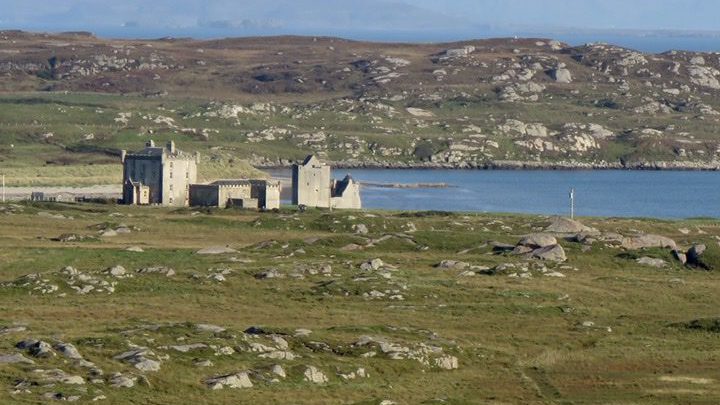
The island of Coll boasts four main habitats or land uses, each of which is dictated by its underlying geology. First, and dominating the Coll landscape, is the sliabh, the rolling bog and heather moorland of the Lewisian gneiss, which occupies around two-thirds of the island. Next come the dunes and species-rich machair grasslands formed on the blown sands which, in places, cover the gneiss. Third, is the farmed landscape of pasture and silage fields, on better soils in a narrow band towards the southern end. Last of all, are the seas and rocky shores which surround the whole.
Each of these habitats has a special and distinctive wildlife which defines it: from the rare water plants of the lochans on the moors, to the Corncrakes of the grass fields.
Today we took in aspects of all four, starting with the farmland fields. No Corncrakes today – the adults headed south a couple months ago to their wintering grounds in central Africa, leaving behind this year’s youngsters to feed up and follow in their tracks in the autumn; the fact that they will end up in the same savannah grasslands in the same valleys as their parents demonstrates that, for them, their detailed migration ‘map’ is innate rather than learned.
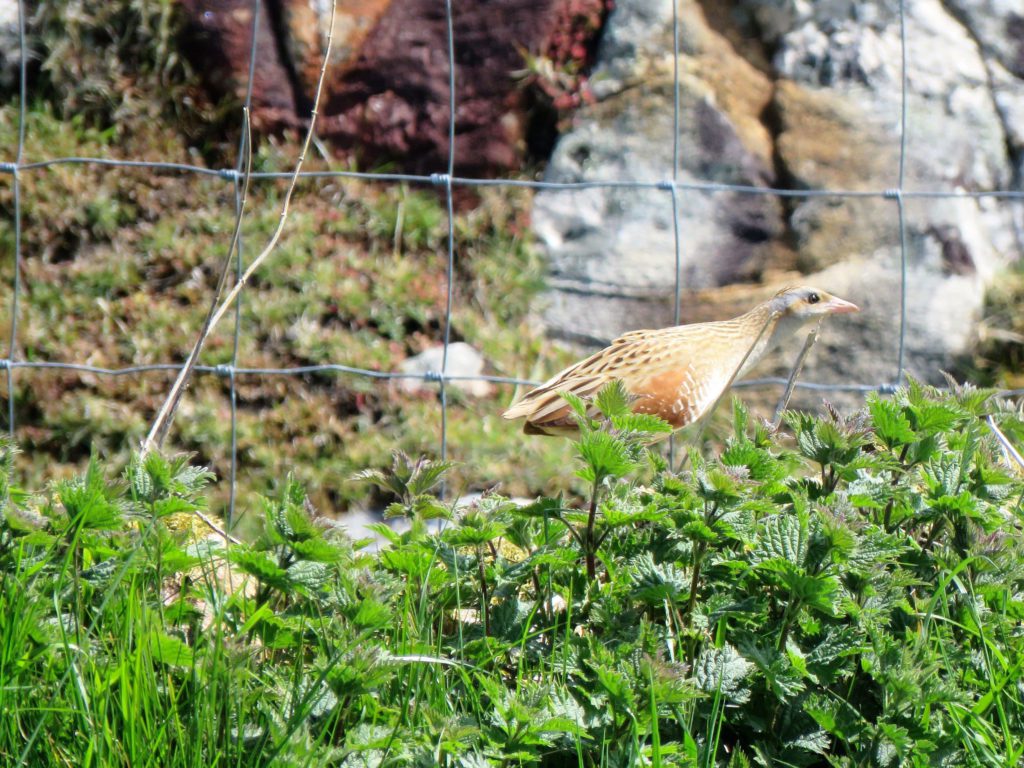
But the cut fields are important for other wildlife at this time of year, as shown by the large flocks of Rock Doves, Lapwings, Starlings and small finches (mostly Linnets and Twites) feeding in them. The latter in turn attract a marauding Merlin, wings scything as it cuts through the flock, banking at an impossible angle to fly back over our heads. A thrilling but split-second encounter!
Further out in the fields a large flock of Barnacle Geese had gathered, high arctic breeders that winter in large numbers on the west coast of Scotland. These distinctive black and white birds, having newly arrived, were wary and hungry, a rabble of squabbling chattering family groups, grateful for the short turf of nutrient-rich grasses to tuck into. They were never quite settled though, always on the look out for dangers lurking in the field margins.
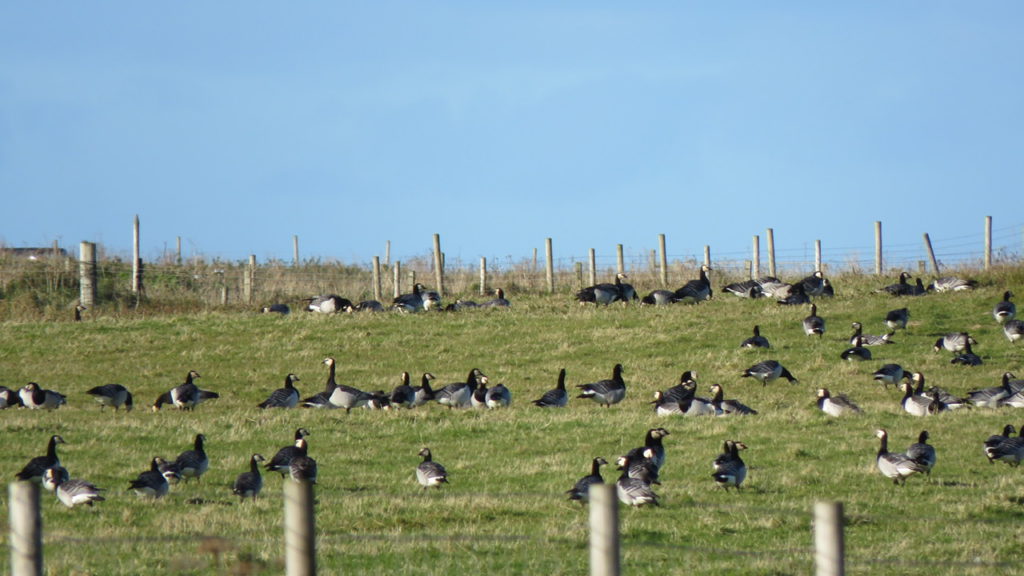
These fields are managed especially for wildlife by the local farmer in partnership with the RSPB and with financial support from the Scottish government. One of our walk clients today was instrumental in setting up the first ever agri-environment schemes in the 1980s, the Environmentally Sensitive Areas. We discussed the lessons to be learnt from that experience as the UK forges new arrangements for farming and the environment in the post-EU world, outside the Common Agricultural Policy. Our client suggests two critical factors: the importance of ministerial understanding of, and commitment to, the outcomes that the scheme is trying to achieve; and the need to tailor bespoke arrangements to the needs of local areas (rather than having a blanket ‘one-size-fits-all’ policy). Sounds sensible. Time will tell whether these lessons are applied to the new ‘public money for public goods’ scheme being developed over the coming months.
Next we headed down to the beach where we talked about the omni-present plastic detritus marking the high-tide line. Most of it looks like fishing waste: short lengths of rope and net, plastic cladding from lobster creels, and buoys. Some of it will be local waste ‘Made in Scotland’ but much of it is from farther afield: Norwegian fish farm floats and Florida shrimping pots. We could see the problem, but the answers are less obvious. A role for governments on the international stage to regulate to high common standards, for industries to take responsibility for their wider impacts, and for individuals to just be more thoughtful. And in the meantime, the rest of us will keep taking bin bags down to the beach and filling them with the rubbish that washes up.
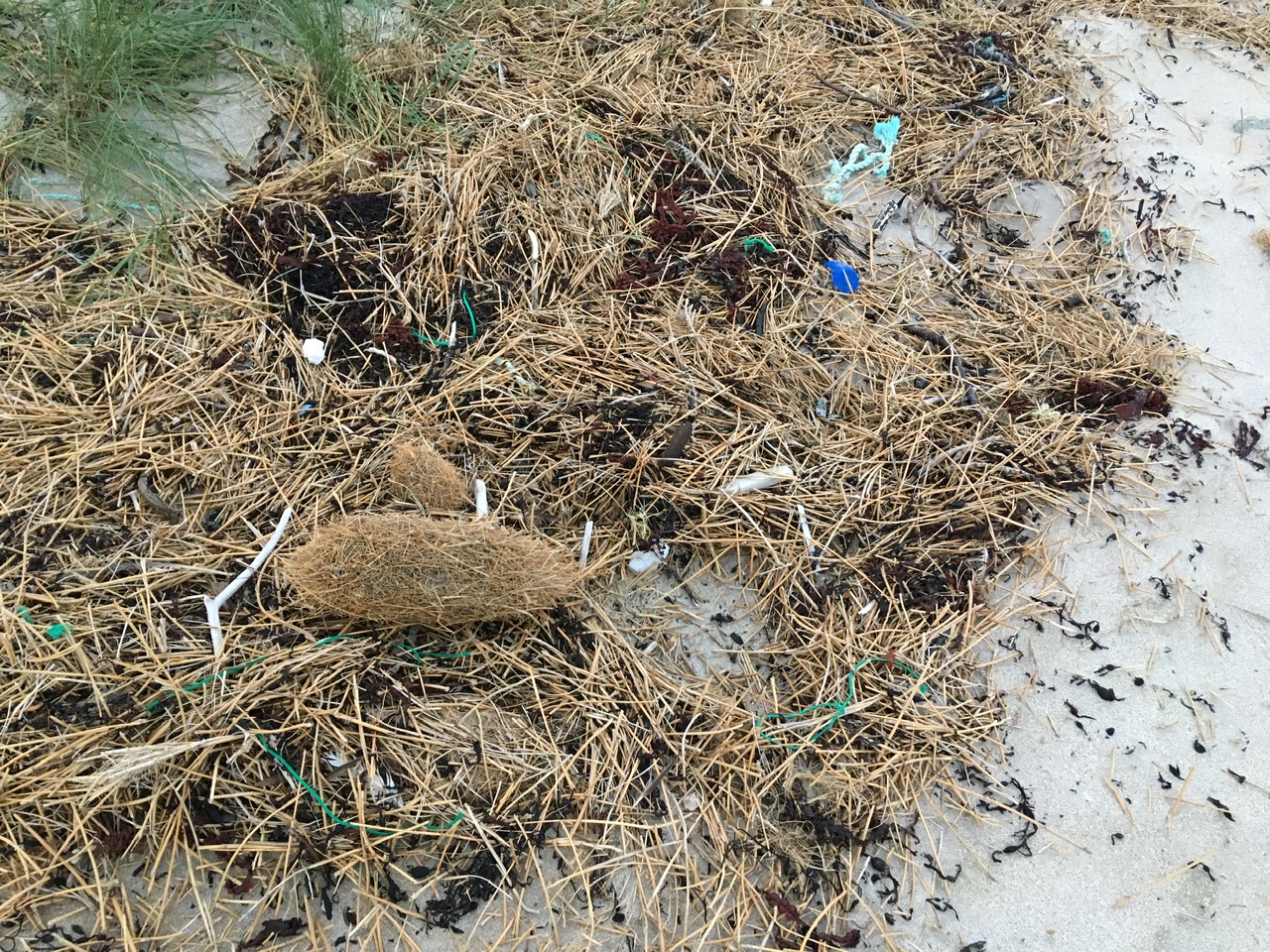
Among the rubbish on the strand line though, a remarkable phenomenon: a cluster of the rolled balls of dried grass stems which are called Nuns’ Farts in the Mediterranean, where they are created by the gentle action of the sea rolling together old stems of the marine eel grass Posidonia oceanica. Have these examples washed here all the way from a Greek island? Perhaps our own native eel grasses (the Zostera) also form them? I’m at a loss to explain them – they are beautiful, both solid and delicate at the same time. I have since seen them adorning several window ledges and gardens around the island, so they’re not an uncommon phenomenon here. I tell our guests that our most treasured possession is a heart-shaped sea bean, discovered on a Coll beach, which began its journey falling from a liana into a stream in a Central American rainforest – so the sea could have carried these dried grassy balls from anywhere. I will investigate further…
Next we’re up into the dunes where it is evident from the variety of leaf shapes and seed heads that an astonishing variety of wild flowers decorate the sward in the summer – the famous Coll machair. I can put names to most of the dried flower heads and it gets us talking about the different strategies that plants use to spread their seeds. The Bloody Cranesbill forms bizarre candelabras with each seed presented to the world on a brittle stalk, waiting for a passing animal to ping it off; next to it, a Wild Carrot uses hooked bristles to hitch a ride for its seeds on the same animal; another strategy, deployed by for example the Blackberry, uses animals in another way, by persuading them to eat their seeds, packaged in a juicy fruit, and deposit them elsewhere sometime later with a little pile of manure as fertiliser; meanwhile the Frog Orchid has gone miniature, with seeds so small the wind will take them for miles – indeed, so fine are they that orchid seeds have been found in the stratosphere circling the globe; finally, the Yellow-rattle has gone for a shaker-style seed dispenser with the seeds held aloft in pods on stiff stems which scatter their contents when the wind blows (which is most of the time on Coll!)
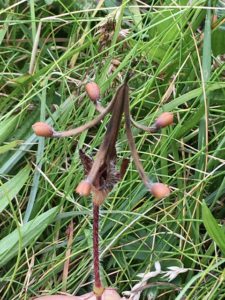
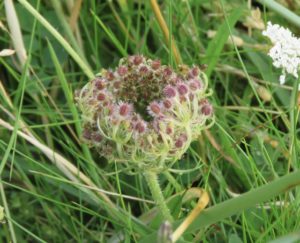
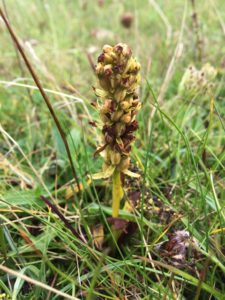
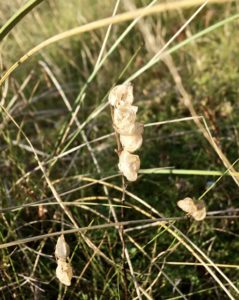
The dunes were also full of tiny terrestrial snails, making the most of the calcium-rich soils which (in a neat circularity) themselves derive from the shells of countless marine snails, crushed into sand over the millennia. I was keen to go away and put a name to today’s snails and I can now report them to be the Heath Snail Helicella itala, a widespread but declining species here in the UK.
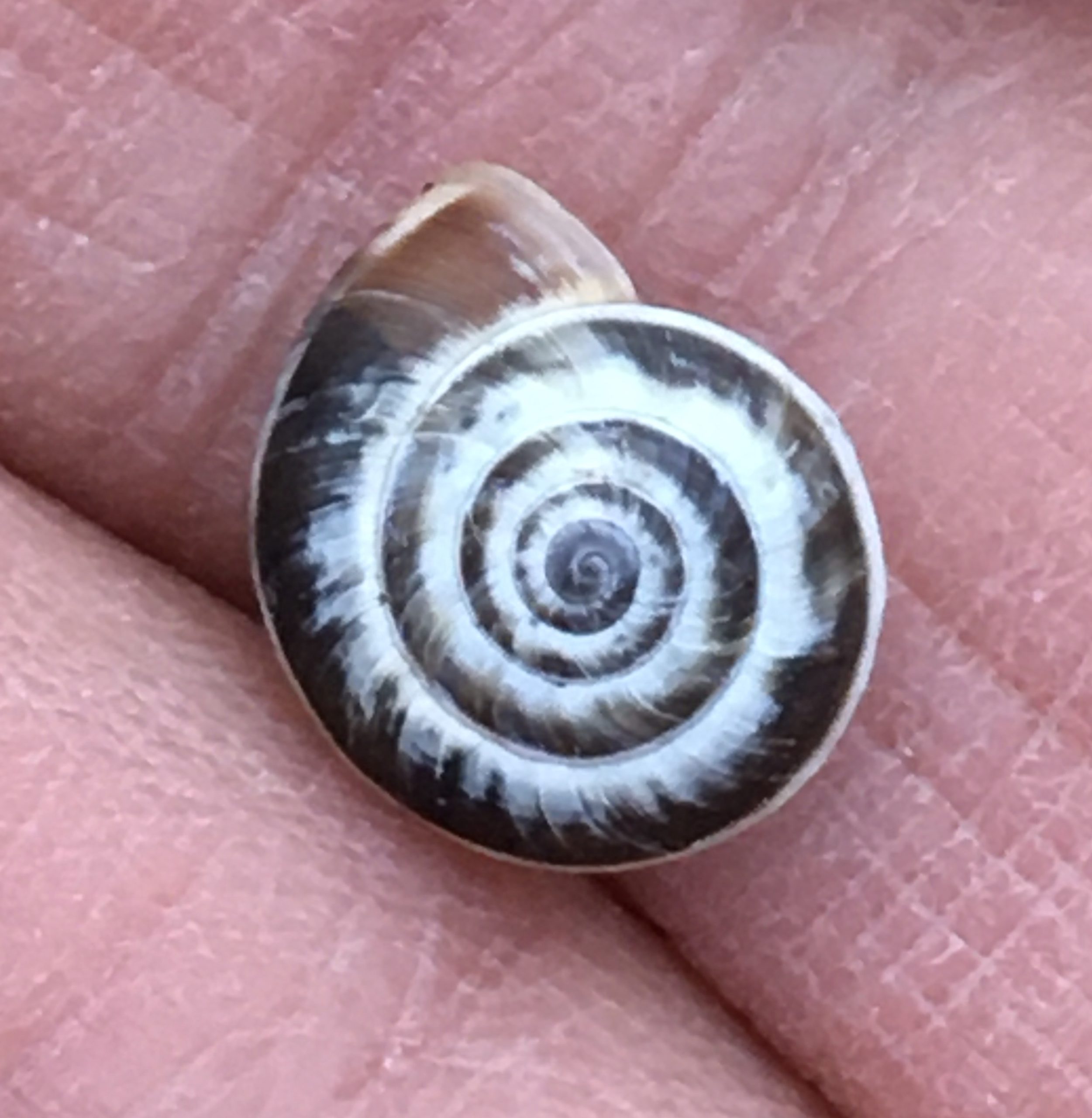
The birds are less predictable at this time of year, no longer holding territories so harder to pin down, but on the plus side this does allow for unexpected encounters. Today, a ring-tailed Hen Harrier takes us by surprise as it hunts for small birds along the dune ridge.
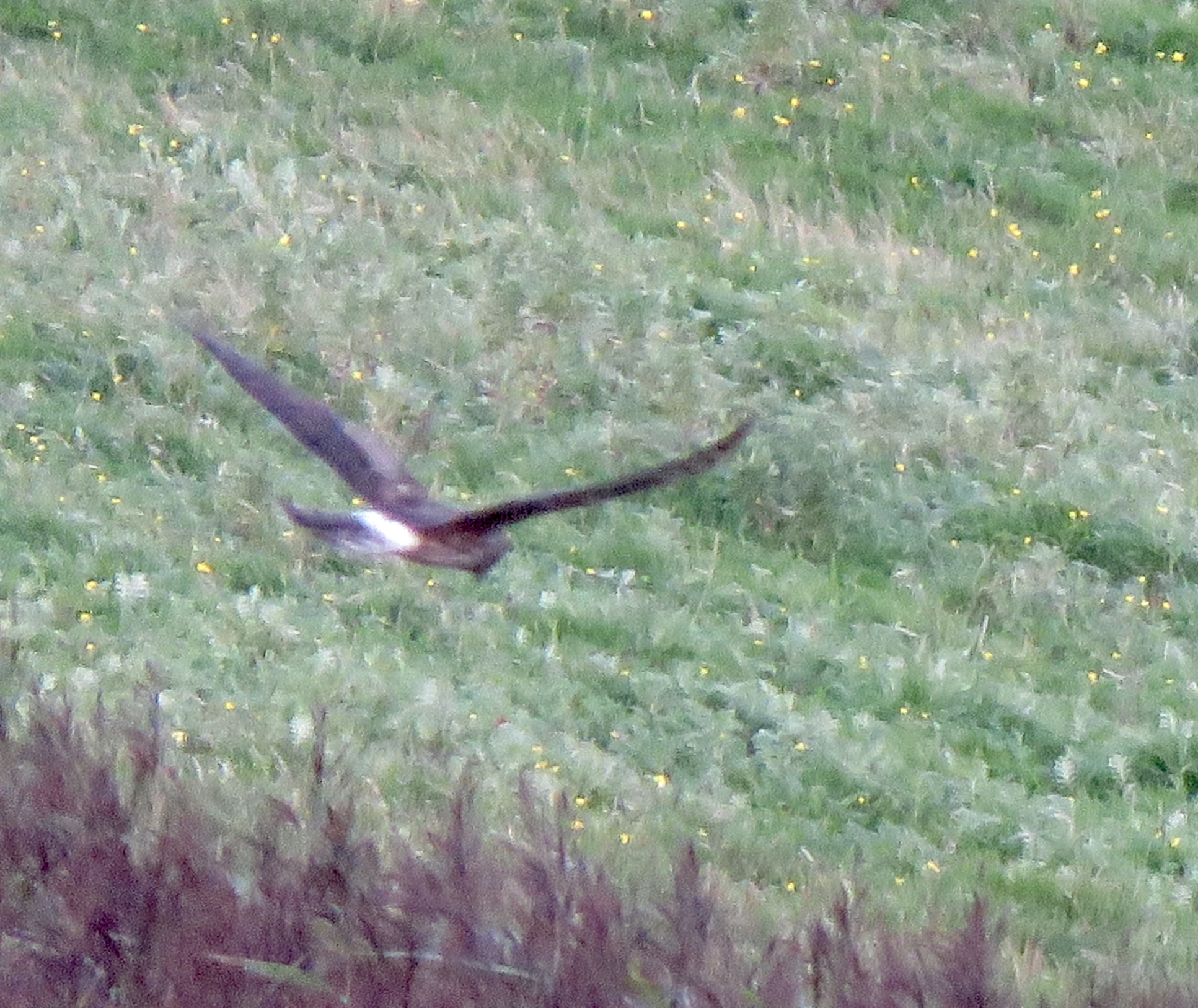
This gets us talking about other unpredictable encounters which the island offers, especially with otters. The best way to see an otter is not to try. We’ve seen several while we’ve been here, and we’ve spent lots of time looking for them, but these two events have never coincided. Our maxim is: if the otter knows you’re looking for it, it won’t appear. Make it clear that seeing an otter is the last thing on your mind and they will come – when you’re driving along a track, or sat drinking coffee or walking in the hills. We test out the theory while sitting looking for them across Feall Bay. And sure enough, because we are otter-watching, none appear. Perhaps we should call it ‘notter- watching’?
Some consolation is, though, provided by a pair of Great Northern Divers fishing in the bay. In their breeding plumage (as today), these are handsome birds with bottle-green heads and white collars. They breed in the arctic, but winter in the seas around Coll in good numbers.
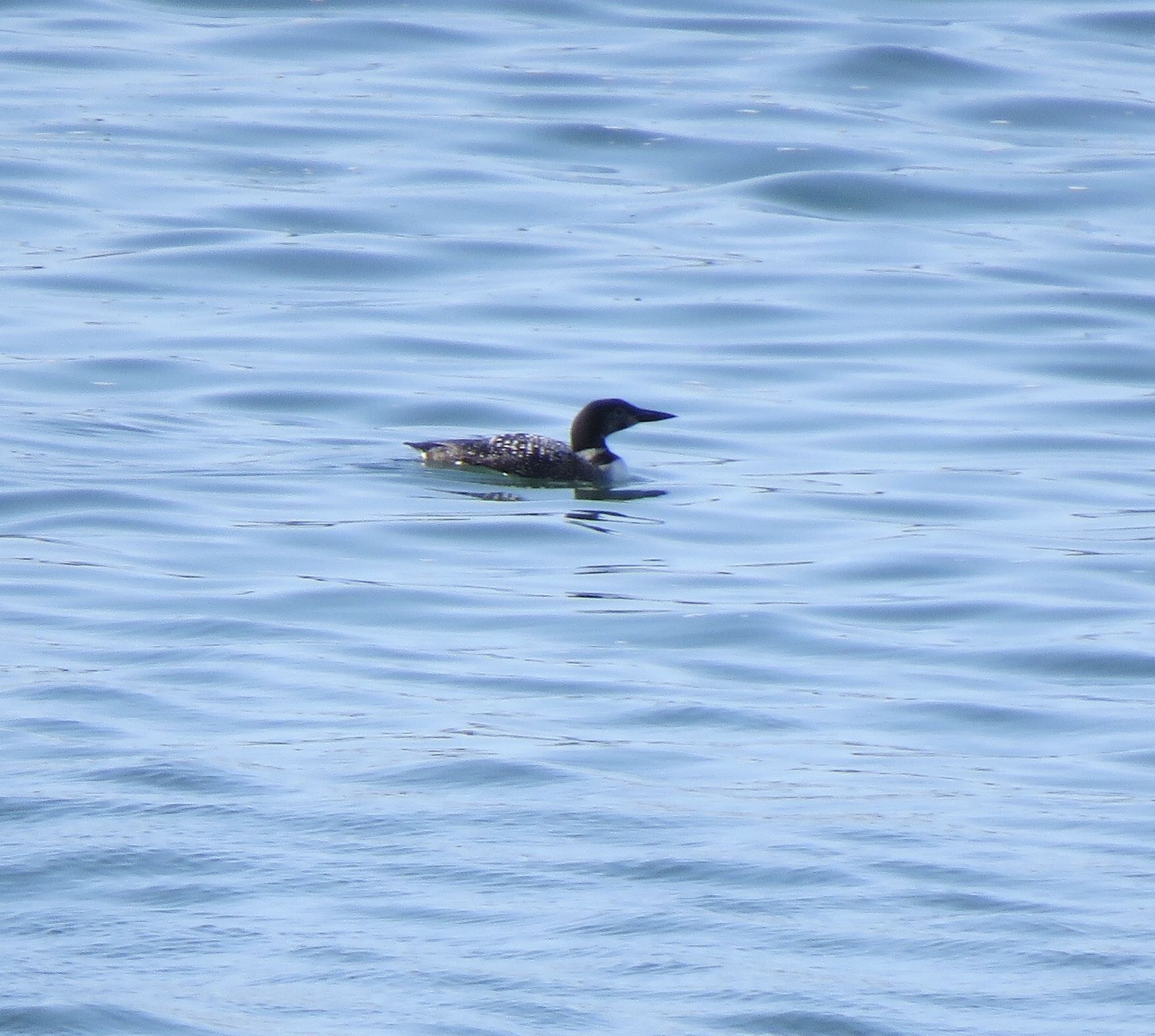
WildSmiths
October 2020
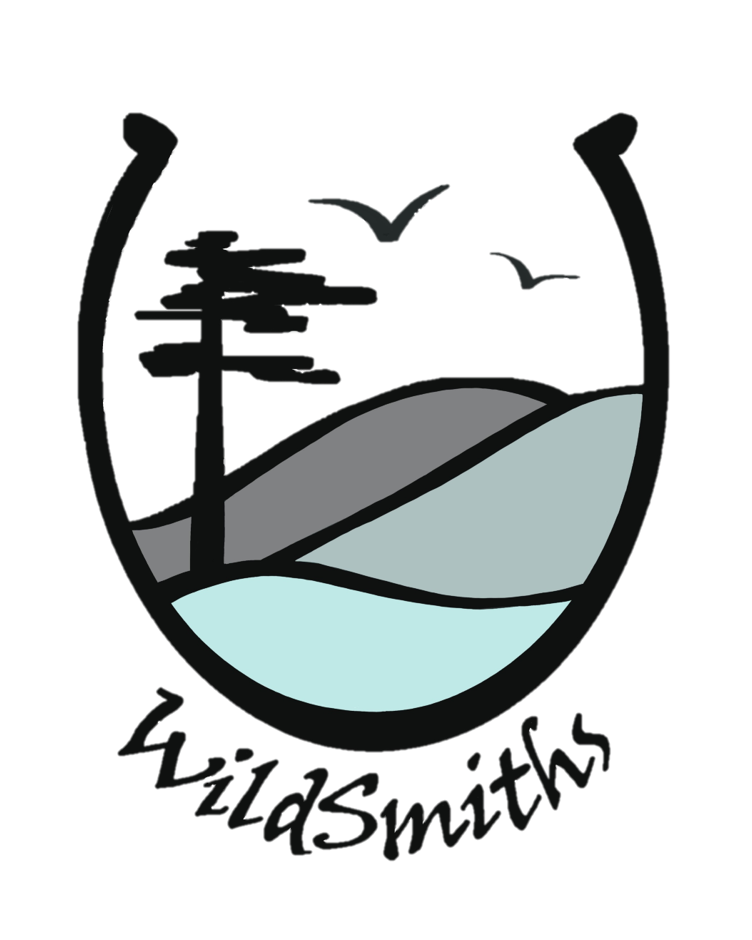

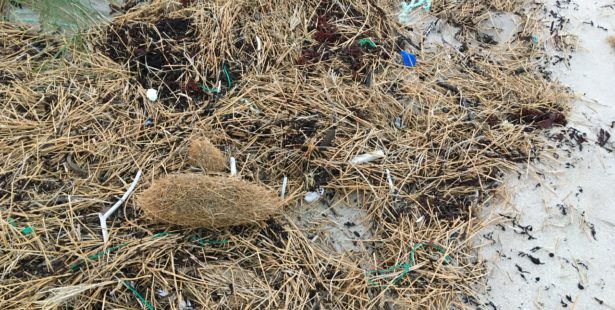
What interesting plants and snails.